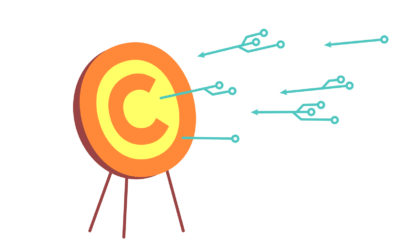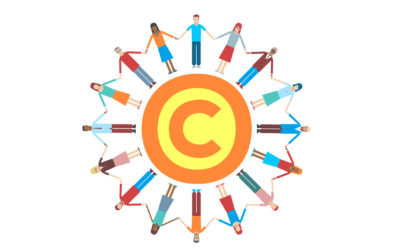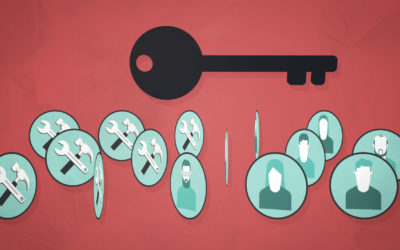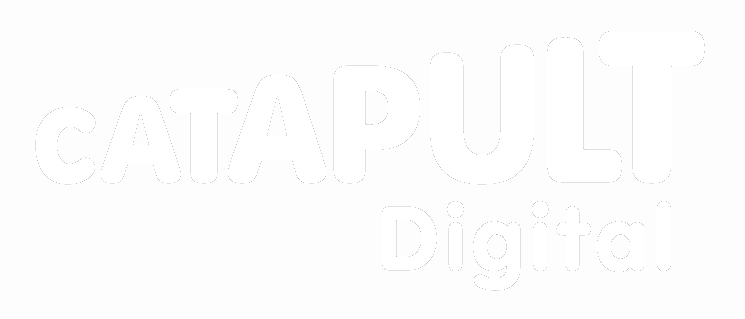Illustration: Davide Bonazzi
What are the arguments for and against contemporary copyright regulation?
1. Introduction
2. Arguments Supporting Copyright
3. Arguments Criticising Copyright
See also:
– Case Study: Fan Fiction
– Task
1. Introduction
As was established in Prompt One, the ultimate purpose of copyright is the creation and spread of knowledge. In order to do this, copyright must strike a fair balance between protecting creative works and allowing the public to use them.
“The purpose of copyright is to protect the investment of time and resources in the creation of something new, whilst at the same time encouraging socially beneficial uses of those materials.” (Academic)
Balancing these different objectives can be a challenge for copyright, particularly in the digital age. This is because there are many different stakeholders with opposing interests in the copyright debate, and they do not always agree on where the balance lies.
“Rights owners have to recognise that they need to adapt their own expectations and methods of working. Users have to accept that free access to everything is incompatible with their desire to see materials created and with the rights of creators.” (Archive Expert)
In light of this, we will explore the different stakeholder perspectives drawn from the responses on copyright regulation in the digital age and consider the arguments supporting and arguments criticising copyright regulation.
2. Arguments supporting copyright
From the stakeholder responses, we have identified three main arguments supporting copyright regulation, which are explored in this section. They are (a) rewarding creators; (b) encouraging creativity; and (c) promoting culture in society.
Copyright rewards creators
The first argument supporting copyright regulation is that it means authors are paid for their work. This means that creators can live from their work; such as described in the J. K. Rowling example in Prompt One. This is achieved by granting the creator an exclusive right, which means others need to ask for permission before they can use the whole, or a substantial part, of the creator’s work, unless the use falls within one of the exceptions or the work is in the public domain.
“Having copyright in my own work has allowed me to make a living from the photographs produced. Without copyright I would not have been able to support myself doing this work over the last 40 years creating a body of work which has been widely published.” (Photographer)
Usually creators make money from their creations by licensing their copyright. They can do this in a number of ways, such as through a collecting society, a publisher or record label for example.
“As a record label we licence the copyright, we are essentially loaning the rights for set periods. We are striking a deal so that we can distribute the artists material.” (Independent Record Label)
Copyright then enables the licensing agencies to distribute the work to the public and pay the creator royalties.
“Copyright allows visual artists to own the fruits of their creativity. As the copyright owner, it entitles them to royalties.” (Collecting Society)
For more information about how licensing works, see the licensing and exploiting section on Copyrightuser.org.
Copyright encourages creativity
When artists are paid for their work, through royalties for example, they are then able to produce more material.
“Royalty earnings help to support an artist’s practice by paying for studio rent or the purchase of equipment and materials.” (Collecting Society)
Copyright only protects the expression of an idea, not the idea itself. This means that whilst creators can benefit from their work, their personal expression, the general ideas remain available for others to use. See the using and re-using section on Copyrightuser.org.
“Some artists feel humbled to have young artists take influences from their work.” (Musician)
Another person can take inspiration from a work and add his own personal creative input to develop further creative works. This new work could then also be protected by copyright.
“To be original, works must bear the stamp of the author’s personality.” (Academic)
Copyrightuser.org interviewed creators and asked them about what motivates them to create. For example see the video involving filmmakers for a further insight.
Copyright benefits society by promoting culture
As explained above, when authors are encouraged to create, more creations and more content come into being. As a result, our cultural heritage grows and this benefits society as a whole.
“Copyright has an important purpose in benefiting society by encouraging the
creation of works of learning, the arts and entertainment that the members of society can enjoy.” (Archive Expert)
These examples illustrate that the purpose of copyright is to promote creativity and spread knowledge. Copyright allows creators to get paid for their work, which means more creation and a rich culture for society.
“Copyright stimulates creativity and innovation which promotes our cultural heritage.”
(European Regulator)
3. Arguments criticising copyright
Once again, from the stakeholder responses, we have identified arguments criticising copyright. These include (a) copyright protection is too long; (b) copyright regulation is too strict; and (c) it has not adapted to new technologies.
Copyright protection is too long
Generally, copyright expires 70 years after the death of the creator. After that time, the work becomes part of the public domain. Once in the public domain, copyright is no longer attached to the work and it can be used by anyone without permission. See the public domain section on Copyrightuser.org for more information.
Some stakeholders believe that copyright protection lasts too long and therefore does not balance the different interests fairly.
“An issue of concern is the long duration of copyright protection, which means it takes longer for works to reach the public domain.” (Academic)
Therefore, some stakeholders argue that copyright protection should be shorter so that works can become part of the public domain sooner. This would mean that the public has the ability to access and use the works within a shorter period of time.
“Copyright now endures for so long that by the time it expires it cannot be said to be satisfying its original purposes.” (Archive Expert)
Copyright regulation is too broad
Some stakeholders also argue that copyright regulation is too broad. By this they mean that copyright prohibits too many activities. As a result, it is felt by some that the balance of copyright falls in favour of the copyright owners.
“The cultural objectives of copyright may be undermined by strict regulatory rules in favour of right holders.” (Academic)
One aspect of copyright that determines what activity is allowed without permission, and what is not, are the exceptions to copyright. Copyright exceptions are circumstances in which a person does not need the permission from the copyright owner to use his or her work. These exceptions are explained in detail on Copyrightuser.org. They include quotation, news reporting, education, private study and parody, amongst others. However, some stakeholders believe that the exceptions are too narrow. As a result innovative and new uses of copyright works still require permission. This means that common amateur and non-commercial uses online are often infringing.
“A key problem with copyright and digital technologies is that it has changed the way in which works are commonly used and reused – remixes of songs, or mash-ups of videos, for example, to create new works for non-commercial reasons.” (Academic)
Copyright regulation has not adapted to new technology
One reason that copyright exceptions may be too restrictive is that the current copyright law has not adapted appropriately to new technological uses.
“Current laws take no account of user practices, and should be amended to reflect current digital realities rather than penalising.” (Academic)
Copyright has a close relationship with technology; it must keep up to date with new developments in order to continue to protect the creators whilst still promoting the spread of knowledge.
“The copyright exceptions are not up to date with new uses of material such as mash-ups which limits innovative ways of using and creating new works.” (Academic)
However, the most recent changes to the copyright legislation reflects a new set of exceptions, including an exception for parody which takes into account the type of user practices identified above.
The Copyrightuser.org resource provides an interesting video on copyright and creativity, which highlights that the main challenge for copyright law is to adjust to the rapid changes in technology whilst fulfilling the purpose of encouraging learning and the spread of knowledge in a balanced way.
Therefore, if copyright regulation is not up to date it may be too restrictive and cannot serve its purposes to benefit society by encouraging creativity and developing cultural heritage.
Summary
The purpose of copyright is to promote the creation and spread of knowledge. This can have many benefits for the creators, copyright owners and society as a whole.
However, if copyright is too restrictive it could have a chilling effect on creativity and will not serve its purposes.

Therefore, copyright must strike a fair balance between protecting creative works and allowing the public to use them.
Set out below is a table displaying the main arguments for and against copyright as discussed above.
| Arguments Supporting Copyright | Arguments Criticising Copyright |
|---|---|
| Rewards creators | Too long |
| Encourages creativity | Too broad |
| Benefits society | Not up to date |
Case Study: Fan Fiction
When someone, other than the original author, creates a new story using the characters from an existing work, this is known as “fan fiction”. Fan fiction is a popular and creative use of works that are often protected by copyright. The legal perspective is that use of the whole or a substantial part of a copyright work without permission is likely to infringe the copyright owner’s rights, unless the use falls within one of the exceptions or the work is in the public domain.
Authors have mixed opinions on fan fiction. For example, Stephenie Meyer, author of Twilight, actively endorses it by linking to fan fiction sites that use her characters from the Twilight series. However, George R. R. Martin, author of A Game of Thrones, is strongly opposed to fan fiction, as he believes it to be copyright infringement and a bad exercise for aspiring writers.
“My position on so-called ‘fan fiction’ is pretty well known. I’m against it.” George R. R. Martin
There are many reasons why an author might be opposed to fan fiction. For example, they may not approve of the way in which the fan fiction uses of characters from their works. The fan fiction author may also be able to make money from their use of the author’s work, which the original author could see as being unfair.
However, at the same time fan fiction is usually created and shared by fans of the original works. Therefore, if a copyright owner were to enforce their rights against a fan this would be very controversial.
Sources:
Stephenie Meyer – http://stepheniemeyer.com/ts_fansites.html
George R. R. Martin – http://grrm.livejournal.com/151914.html
Task: What permission do you need?
Copyright protects creative works in order to promote the spread of knowledge. However, this must be balanced fairly with the interests of the public.
Consider what kind of copyright permission is required in relation to these various scenarios.
1. You want to create a fan fiction video piece using the characters from your favourite film and you want to publish your fan fiction video on a website where other people share their fan fiction stories.
2. You want to publish your fan fiction video on a public video sharing online platform that is not just for fan fiction but also for any type of video such as YouTube or Vimeo.
3. Your fan fiction video becomes very popular and you are able to make money from it.
4. Do you think this strikes a fair balance between the users and the creators in relation to fan fiction?
Related
Prompt One
What is the nature of contemporary copyright regulation compared with previous practices?
Prompt Three
How effective is copyright regulation?
Prompt Four
What are the wider social issues relating to copyright regulation?
Supplementary Information
Strategies for case studies, information for teachers, useful links and definitions.
Contributors and About the Resource
Authors, contributors, questionnaire respondents and about the resource.













